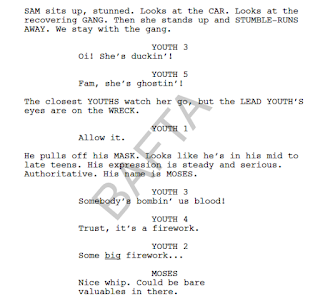(1928 - 1999)
Kubrick was born
in 1928 and raised in the Bronx, New York City, before moving to England,
Hertfordshire in 1961. Working as a photographer in the 1940s, he soon began making short films by the early 1950s. His early major film works were collaborations with filmmakers
such as Kirk Douglas (Spartacus / Paths of Glory) and Peter Sellers (Lolita /
Dr. Strangelove).
Quickly
becoming a well-known name for his meticulous attention to detail and perfectionist
techniques, Kubrick’s cinematography broke new ground using scientific realism
and innovative special effects in 2001: A Space Odyssey. From this point,
Kubrick was in exceptionally high demand, directing some of films such as Barry
Lyndon, A Clockwork Orange (1971) and The Shinning (1980). His final film, Eyes Wide Shut,
was completed in 1999 – shortly before his death.
DIRECTING STYLE
Stanley Kubrick is someone who has proved pivotal in my own journey to filmmaking, as I remember growing up watching films such as Spartacus (1960) and 2001: A Space Odyssey (1968). Though not understanding the significance of what I was watching, I always admired the visual spectacle and attention to detail always placed at the forefront of Kubrick’s work.
DIRECTING STYLE
Stanley Kubrick is someone who has proved pivotal in my own journey to filmmaking, as I remember growing up watching films such as Spartacus (1960) and 2001: A Space Odyssey (1968). Though not understanding the significance of what I was watching, I always admired the visual spectacle and attention to detail always placed at the forefront of Kubrick’s work.
 |
| A visual spectacle - Spartacus (1960) |
 |
| Cinematography from 2001: A Space Odyssey (1968) |
2001: A Space Odyssey
No montage here, no time-compressing cutting techniques: instead, Kubrick shows us Bowman disconnecting the computer one module at a time, with absolutely no shortcuts.
To accompany these long scenes, every one of Kubrick’s films has at least one long, uncut tracking shot, usually with the camera “pulling” the character. As seen in:
The Shining
Very long Steadicam shots of
Danny riding his tricycle along the corridors in the hotel
(“pushing”)
A Clockwork Orange
The record shop scene, in which the camera pulls Alex as he walks around the shop (this is
also a fine example of the use of extreme wide-angle lenses)
 |
| The Shining |
 |
| 2001: A Space Odyssey |
SCENE SELECTION
I have chosen to adapt a selection of scenes from A Clockwork Orange (1971) – one of Kubrick’s better known (and controversial) works.
To begin my piece I have chosen this scene, perfectly demonstrating both the tone of the film itself. The power of music within the film is also very prominent here, and I hope that within my own directing style I will be able to play on this.
To transition between the 2 scenes, I would like to shortly focus on the setting of the Korova Milk Bar - creating an ellipsis between the bloody violence of the first scene and the clinical setting of the second.
(1:14) I also want to look at this scene of Alex with his psychiatrist, as I feel like I can possibly direct the action in a more engaging way than a simple shot-reverse-shot. The scene is also significant as the audience gets a small insight into Alex's brain and the impact of this on his actions - bringing my short narrative to a close.















